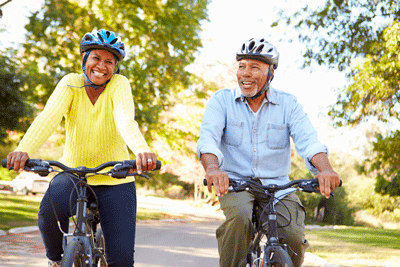This article is part of the #STCPreventionMatters campaign from the R Adams Cowley Shock Trauma Center, University of Maryland. For more information about the campaign and the Center for Injury Prevention and Policy, visit www.umm.edu/PreventionMatters
As the temperature rises, people increasingly want to go outside and enjoy different activities. We are starting to notice more bicycles, motorcycles and e-scooters on the roads. However, sharing the road with other vehicles often results in collisions and severe injuries.
Imagine going out for a bicycle or motorcycle ride on a typical Sunday afternoon, close to home, in your neighborhood, when the unthinkable happens. A car, driving around the corner, is going too fast and doesn’t see you. The driver slams on the breaks but it is too late, they hit you and you go flying over the windshield. You are not wearing a helmet because you are in your own neighborhood, close to home, and feel safe. It is sad to say, but this happens more often than we think.
More than half of the bicycle injuries that occur are within one mile of the person’s home on roads that are familiar. The location of the ride does not change the need to always wear a helmet when on a bicycle, motorcycle or scooter— electronic or not.
Wearing a helmet is the best way to reduce the severity of injuries that can be caused in a collision. Wearing a helmet while riding a bike is often compared to wearing a seatbelt while riding in a car. We don’t get into our car without putting on our seatbelt and we shouldn’t get on our bike, motorcycle or scooter without wearing a helmet. Also, just like a seat belt, a helmet cannot do its job if it is not fastened.
The fit of the helmet is very important. You don’t want to wear a helmet that is too big for your head and moves around while you are riding. The helmet should fit evenly and snug on your head and come down on your forehead. There should be 1-2 finger widths above your eyebrow to your helmet. Many helmets come with multiple sizes of foam pads that velcro to the inside for a better fit. The chinstrap should be tight around your chin.
The law in Maryland states that all bicyclists under the age of 16 must wear a helmet when riding on public property, including, roadways, trails and sidewalks (https://www.roads.maryland.gov/Index.aspx?pageid=599).
Not only is it a law but helmets have been shown to reduce the risk of serious head injury by 85 percent (Thompson, Rivara, and Thompson, 1989). In 2016, the majority of bicyclists who died in a crash were not wearing a helmet. Statistics in the American Journal of Surgery for 2016 also showed that helmeted bicycle riders had:
•51 percent lower chance of suffering from a severe traumatic brain injury (TBI)
•44 percent lower chance of dying
•31 percent lower chance of suffering injuries to the face
Researchers concluded saying that “bicycle helmet use provides protection against severe TBI, reduces facial fractures and saves lives” (https://www.helmets.org/stats.htm).
The weather is only going to continue to improve as will our desire to be outside. Let’s be proactive in our use of helmets and help prevent the impact of traumatic brain injury (TBI) on family members, friends and society. One click of a chinstrap can reduce the possibility of serious injury on the road.
Carla Aresco, MSL, CRNP, is Trauma Program Manager, R Adams Cowley Shock Trauma Center, University of Maryland. She is also the Lead Nurse Practitioner for Trauma Neurosurgery caring for traumatic brain and spinal cord injured patients.
